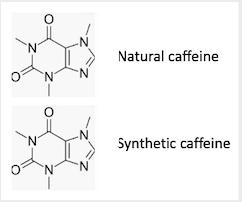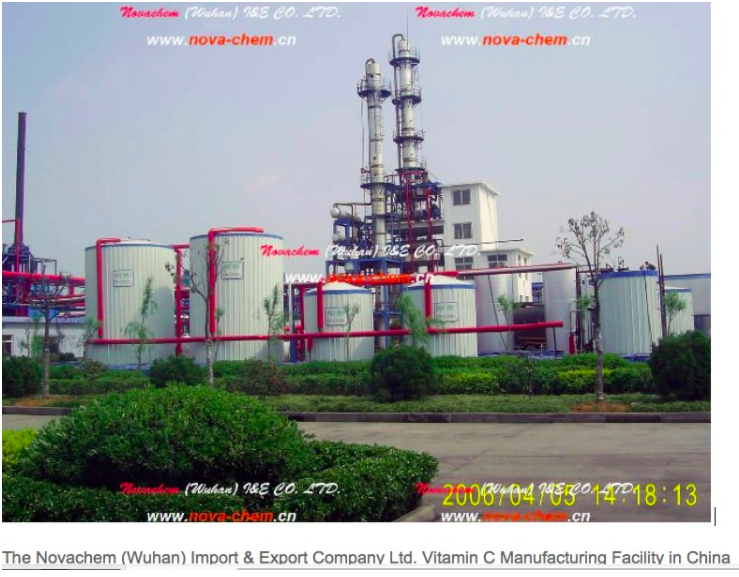
I stumbled across a paper by a group of German chemists from the University of Duisburg-Essen in the journal Analytical Chemistry which left me with mixed feelings. The title is "Caffeine in Your Drink: Natural or Synthetic?"
Why mixed? The analytical chemistry is very clever and well done. But the justification for doing it is pointless and disingenuous. There is absolutely no valid reason to do this study. This can be illustrated by three theoretical studies of equal value, which I just made up.
- If you hold a Three Musketeers Bar (1) upside down while eating it will you consume fewer calories?
- Do people who have social security numbers ending with an even number recover faster from broken legs than those with odd numbers?
- Do people who sit facing south while playing Mahjong fart more than those who face north?
OK, you get it. While "my" studies may sound patently ridiculous they're just as valuable as the caffeine study for disseminating useful information. That's because whether the caffeine in your hypermanic energy drink comes from a coffee bean, a factory, or one of the moons of Jupiter doesn't matter. Not one bit. It's all caffeine. Which ought to make you wonder why it was studied at all.
What is the essence of the paper?
The paper describes an extremely sophisticated method for determining the source of the caffeine in ~60 natural and synthetic samples based on the ratio of 12C (regular old stinky carbon, ROSC) and 13C, a stable, usually harmless isotope of ROSC which contains one extra neutron, making its atomic weight 13 instead of 12 (duh). The natural occurrence of 13C on earth is about 1%.
By contrast, the natural abundance of an unstable, radioactive isotope, 14C is about 0.0000000001%. Despite this tiny amount, 14C is invaluable in determining the age of carbon-containing specimens such as fossils. For an explanation of how 14C dating works see Natural Flavors Are More Radioactive Than Artificial Ones.
Since 13C is not radioactive, the amount in a sample cannot easily be determined by the methods used to measure 14C, especially in 62 samples. Instead, mass spectrometry (MS), a very powerful analytical tool, is used. MS measures the molecular weight of a chemical compound down to one atomic mass unit, so the machine can "see" both regular old stinky carbon and 13C and difference between the two isotopes. But not without considerable effort.
To get around this, the group used a method called high-temperature liquid chromatography coupled to isotope ratio mass spectrometry (HT-RPLC/IRMS) to measure the difference in the occurrence of 13C in the samples and was able to identify two distinct groups: one where the caffeine in the product was natural caffeine and the other with the synthetic equivalent. I found this to be very clever. The rest, not so much.
Time to stop with the chemistry
If I stop with the chemistry now it will spare us considerable pain because there are some incomprehensible math monstrosities in the paper:
Like this - Monstrosity #1

...and when you've figured this one out, there's this:
Monstrosity #2

(I included monstrosity #2 because I really like its name: Vienna Pee Dee Belemnite. Doesn't that sound like a European a capella group with bladder urgency issues?)
Source; Jochmann, et. al., Anal. Chem. 2012, 84, 6, 2805–2810 Publication Date: February 17, 2012 https://doi.org/10.1021/ac203197d
Why the paper doesn't cut it
These guys may be good analytical chemists but they are putting out some mighty inaccurate (or perhaps, misleading) information about caffeine. Here are some examples.
"For manufacturers and customers, it is interesting to discriminate between natural and synthetic products."
Maybe for them, but in the real world, it is a distinction without a difference. It is of no interest whatsoever. The two are identical.
"However, people prefer food products made of natural sources to those made of artificial chemicals."
That's because people have bought into the "natural is better" fallacy. "Bought" is an appropriate word because they're paying a whole lot extra (e.g., Whole Foods, etc.) for the same product. (See my book Natural and Artificial Flavors. What's the Difference?)
"The food and drug administration (FDA) regulates that caffeine must be listed on the label of drinks when it has been added in the production, but not for drinks made from tea or coffee."
This is too stupid for words. The FDA surely knows that there is no difference between the two. If you extract the caffeine from Coke and then put it right back in it now needs a label?? But not if you do the same thing to coffee. Please.
"In consideration of the growing demand for natural drinks on the one hand..."
That's because consumers are morons.
"...and the significant price differences between naturally occurring caffeine sources and synthetic caffeine chemicals on the other hand, there is a high risk of fraud by false declaration of caffeine origins."
Hoo boy. "Synthetic caffeine chemicals"? It would be impossible to come up with a more misleading term. This is because:
- The authors imply that caffeine from a factory is a chemical (worse, a synthetic chemical) but the caffeine from plants is a magical non-chemical from a "source."
- High risk? This implies that the synthetic-chemical-caffeine is dangerous while the mother-nature-caffeine is not. Complete bull###t.

"Moreover, the naturally caffeinated drinks are generally assumed to be healthier than energy drinks containing high levels of synthetic caffeine."
Yes, they are, but not because of the source of the caffeine; it's the amount. According to Caffeine Informer, Redline Xtreme Energy Drink contains 316 mg of caffeine (!) in an 8-ounce can (!). By comparison, according to the Mayo Clinic one cup of coffee (8-ounces) contains 95 mg. The "energy drink," contains 3.3-times the amount of caffeine in a cup of coffee – roughly enough to enable an armadillo to win an Ironman Triathlon.
But that's nothing compared to a liquid heart attack called 10 Hour Energy Shot, which contains 422 mg – more than the daily recommended intake (400 mg) of caffeine in a 1.93-ounce bottle. I'm reluctant to call it a drink because I wonder if you don't have to chisel it out of the bottle. Chug two of those and please send photos of your climb up the Chrysler Building.
"Commercial chemicals derived from petroleum and coal sources may have different [13C] value compared to those extracted from biogenic sources."
Aha. The old "Petroleum-Derived Game," always a crowd favorite. As I wrote in Vitamin C Conundrum For The Organic Crowd, you might think that your "Nature's Natural Nature" Vitamin C comes from here:

Photo: Clip Dealer Royal-Free Media
But it doesn't. It is manufactured from glucose and a whole bunch of chemical reagents. About 95% of the world's vitamin C is made in China. In places like this:

(Check out the location/ Eerie, no?)
Was this study funded by an "organic" company? Wouldn't surprise me. Who else would care whether your caffeine molecule came from coffee beans or Jupiter?
Armed with this critical information, please enjoy your morning cup of coffee. Just wake up and smell it first.
NOTE:
(1) I never got The Three Musketeers bar. It tastes like sweetened mattress stuffing. Milky Ways, on the other hand...



